
Denis Jabaudon
@djabaudon.bsky.social
Developmental neurobiologist, neurologist, & evo-devo aficionado. University of Geneva, Switzerland.
Interested in the mechanisms of neurogenesis, and how they might converge/differ across species, regions, and life epochs? Check this out, wonderful location and great science! Please RT
neuro-unige.ch/news/csf-mee...
neuro-unige.ch/news/csf-mee...

October 5, 2025 at 12:16 PM
Interested in the mechanisms of neurogenesis, and how they might converge/differ across species, regions, and life epochs? Check this out, wonderful location and great science! Please RT
neuro-unige.ch/news/csf-mee...
neuro-unige.ch/news/csf-mee...
Ever wondered how robust cellular identity is to external perturbations? Here we disrupt cellular environmnent in vivo and in vitro, and find cell population specific sensitivities. Environment sculpts development yes, but not all cells are made of the same wood. www.science.org/doi/10.1126/...

Cell-extrinsic controls over neocortical neuron fate and diversity
Cell-extrinsic cues are key for neocortical cell identity and diversity.
www.science.org
September 19, 2025 at 6:04 AM
Ever wondered how robust cellular identity is to external perturbations? Here we disrupt cellular environmnent in vivo and in vitro, and find cell population specific sensitivities. Environment sculpts development yes, but not all cells are made of the same wood. www.science.org/doi/10.1126/...
"You cannot not communicate". Paul Watzlawick.
Highlights that all human interactions, even silence, are forms of communication and convey a message. Everything we do —or don't do — can be interpreted as communication by others. E.g. ghosting. There's no way out of being social.
Highlights that all human interactions, even silence, are forms of communication and convey a message. Everything we do —or don't do — can be interpreted as communication by others. E.g. ghosting. There's no way out of being social.

June 7, 2025 at 6:34 AM
"You cannot not communicate". Paul Watzlawick.
Highlights that all human interactions, even silence, are forms of communication and convey a message. Everything we do —or don't do — can be interpreted as communication by others. E.g. ghosting. There's no way out of being social.
Highlights that all human interactions, even silence, are forms of communication and convey a message. Everything we do —or don't do — can be interpreted as communication by others. E.g. ghosting. There's no way out of being social.
Dear Reviewer #2, thank you for accepting to assess our revisions. After 60 days, the editor gave up, you never answered. The 1st author worked day & night to address your points, but you were too busy to even say no. The outcome is irrelevant, his disillusion isn't.
Review responsibly, it matters.
Review responsibly, it matters.
June 4, 2025 at 5:17 AM
Dear Reviewer #2, thank you for accepting to assess our revisions. After 60 days, the editor gave up, you never answered. The 1st author worked day & night to address your points, but you were too busy to even say no. The outcome is irrelevant, his disillusion isn't.
Review responsibly, it matters.
Review responsibly, it matters.
Reposted by Denis Jabaudon
Postdoc opportunity in the heart of Europe! Check out the flyer below.
Join our team on an international project with Anthony Holtmaat exploring synaptic plasticity and specificity in cortical and thalamocortical circuits.
Join our team on an international project with Anthony Holtmaat exploring synaptic plasticity and specificity in cortical and thalamocortical circuits.
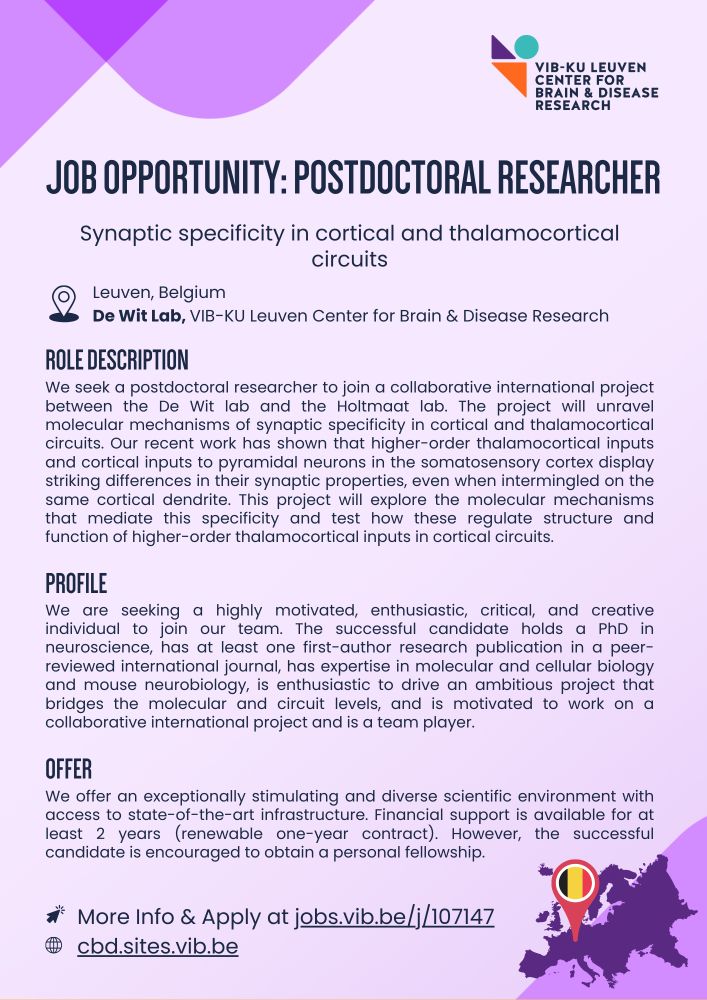
April 8, 2025 at 12:48 PM
Postdoc opportunity in the heart of Europe! Check out the flyer below.
Join our team on an international project with Anthony Holtmaat exploring synaptic plasticity and specificity in cortical and thalamocortical circuits.
Join our team on an international project with Anthony Holtmaat exploring synaptic plasticity and specificity in cortical and thalamocortical circuits.
Reposted by Denis Jabaudon
Brilliant @natneuro.nature.com by @scienceyael.bsky.social
@lehtinenlab.bsky.social, uncovering “a fundamental secretory pathway in the
Choroid Plexus that shapes brain development” in mice 🧪🧠
www.nature.com/articles/s41...
@lehtinenlab.bsky.social, uncovering “a fundamental secretory pathway in the
Choroid Plexus that shapes brain development” in mice 🧪🧠
www.nature.com/articles/s41...

Choroid plexus apocrine secretion shapes CSF proteome during mouse brain development - Nature Neuroscience
The choroid plexus (ChP) provides molecular cues for brain development. However, the underlying mechanisms are unclear. This study identifies an apocrine secretion mechanism in the ChP that modulates ...
www.nature.com
May 28, 2025 at 1:13 PM
Brilliant @natneuro.nature.com by @scienceyael.bsky.social
@lehtinenlab.bsky.social, uncovering “a fundamental secretory pathway in the
Choroid Plexus that shapes brain development” in mice 🧪🧠
www.nature.com/articles/s41...
@lehtinenlab.bsky.social, uncovering “a fundamental secretory pathway in the
Choroid Plexus that shapes brain development” in mice 🧪🧠
www.nature.com/articles/s41...
Still openings, check it out!
🧠Job Opening!🧠
We are opening 2️⃣! positions
– bioinformatics / molecular biology –
in a project studying how temporal patterns set up connectivity in human brain tissue.
@institutimagine.bsky.social.
Full details below, contact me for details if interested.
And please retweet (re-bluesky?)!
We are opening 2️⃣! positions
– bioinformatics / molecular biology –
in a project studying how temporal patterns set up connectivity in human brain tissue.
@institutimagine.bsky.social.
Full details below, contact me for details if interested.
And please retweet (re-bluesky?)!
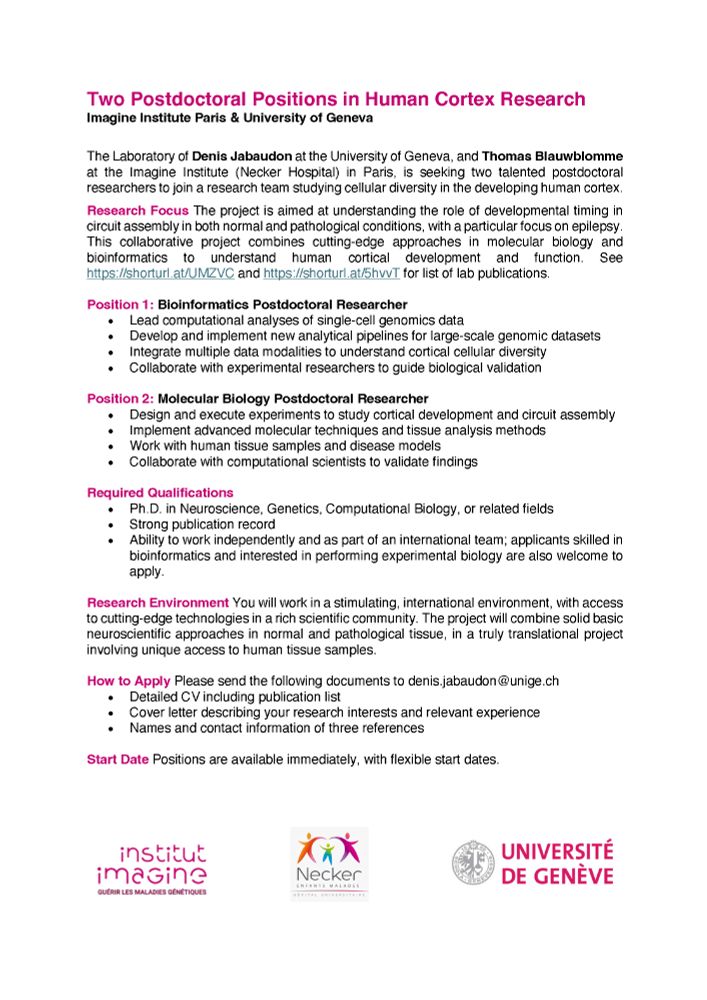
May 28, 2025 at 5:02 AM
Still openings, check it out!
Reposted by Denis Jabaudon
Success in academia often has more to do with luck, patronage and the job market than “hard work”.
Good academics acknowledge this.
I worked hard, but I was in the right place at the right time on occasion. Historians far more talented than I have fallen between the cracks.
Good academics acknowledge this.
I worked hard, but I was in the right place at the right time on occasion. Historians far more talented than I have fallen between the cracks.
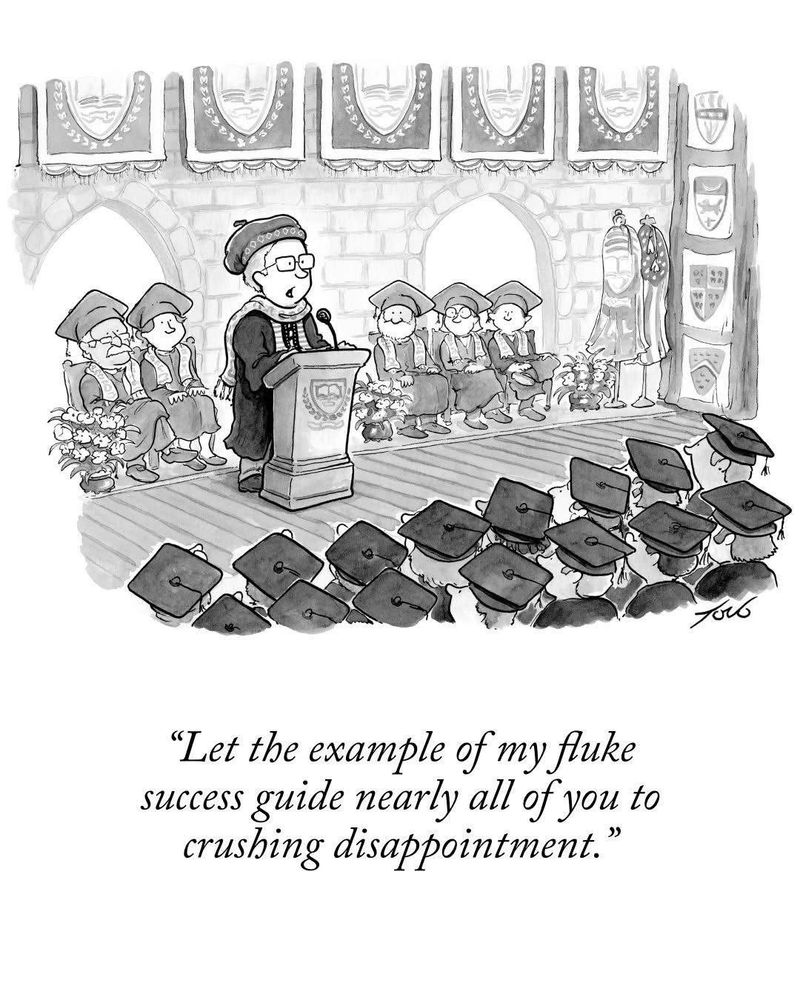
May 21, 2025 at 7:16 AM
Success in academia often has more to do with luck, patronage and the job market than “hard work”.
Good academics acknowledge this.
I worked hard, but I was in the right place at the right time on occasion. Historians far more talented than I have fallen between the cracks.
Good academics acknowledge this.
I worked hard, but I was in the right place at the right time on occasion. Historians far more talented than I have fallen between the cracks.
Reposted by Denis Jabaudon
"One day, when it's safe, when there's no personal downside to calling a thing what it is, when it's too late to hold anyone accountable, everyone will have always been against this." - Omar El Akkad
75 days now of complete blockade/siege of Gaza. People are starving, babies elderly & sick already dying. Meanwhile Israel destroying what's left of Gaza so the living will have no place to return to. An atrocity for the ages and the world is so quiet.

May 18, 2025 at 1:25 PM
"One day, when it's safe, when there's no personal downside to calling a thing what it is, when it's too late to hold anyone accountable, everyone will have always been against this." - Omar El Akkad
Reposted by Denis Jabaudon
🎉 Excited to share that our paper on FCDII is out today! 🙌🏻 Huge thanks to @sbaulac.bsky.social and @sara baldassari for bringing me on board and introducing me to the complexity of somatic mutations. Hope our work helps advance understanding of the disease mechanisms.
Single-cell genotyping and transcriptomic analysis reveals cell-type specific and non-autonomous effects of mTOR pathway mutations in mosaic focal cortical dysplasia type II (FCDII) 🧠🧪
www.nature.com/articles/s41...
www.nature.com/articles/s41...

Single-cell genotyping and transcriptomic profiling of mosaic focal cortical dysplasia - Nature Neuroscience
In this work, the authors performed a single-cell genotyping and transcriptomics analysis, revealing cell-type-specific and nonautonomous effects of mTOR pathway mutations in mosaic focal cortical dys...
www.nature.com
April 30, 2025 at 7:47 PM
🎉 Excited to share that our paper on FCDII is out today! 🙌🏻 Huge thanks to @sbaulac.bsky.social and @sara baldassari for bringing me on board and introducing me to the complexity of somatic mutations. Hope our work helps advance understanding of the disease mechanisms.
Why does the forebrain expand dramatically while other neural regions grow less? Our new publication reveals progenitor metabolism critically shapes region-specific brain growth. Thread below. authors.elsevier.com/a/1k-udL7PXu...
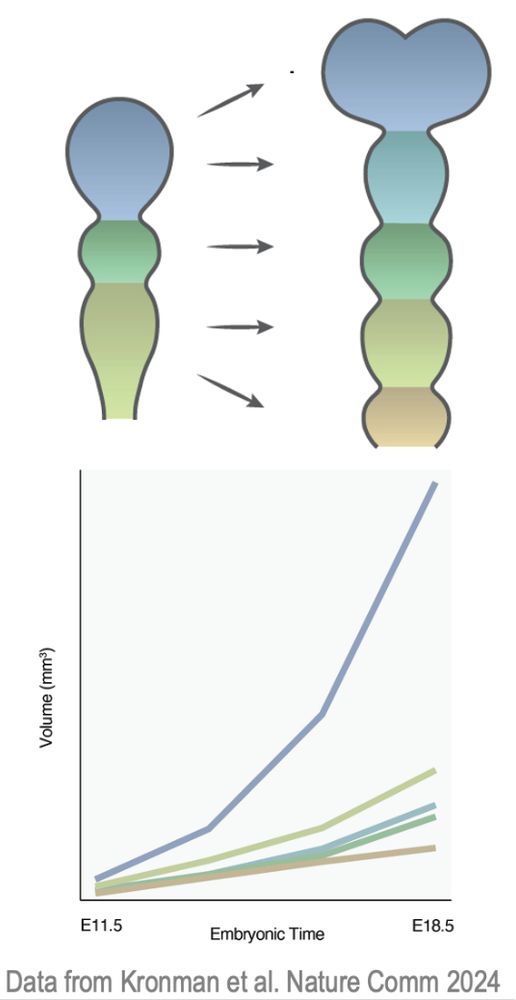
May 5, 2025 at 4:52 PM
Why does the forebrain expand dramatically while other neural regions grow less? Our new publication reveals progenitor metabolism critically shapes region-specific brain growth. Thread below. authors.elsevier.com/a/1k-udL7PXu...
#Standupforscience event today at Campus Biotech in Geneva. In solidarity for our colleagues in the US and in support of universal values of science: transparency, evidence, cooperation, and intellectual honesty.

March 7, 2025 at 3:57 PM
#Standupforscience event today at Campus Biotech in Geneva. In solidarity for our colleagues in the US and in support of universal values of science: transparency, evidence, cooperation, and intellectual honesty.
Open positions in human developmental neuroscience, check it out!
🧠Job Opening!🧠
We are opening 2️⃣! positions
– bioinformatics / molecular biology –
in a project studying how temporal patterns set up connectivity in human brain tissue.
@institutimagine.bsky.social.
Full details below, contact me for details if interested.
And please retweet (re-bluesky?)!
We are opening 2️⃣! positions
– bioinformatics / molecular biology –
in a project studying how temporal patterns set up connectivity in human brain tissue.
@institutimagine.bsky.social.
Full details below, contact me for details if interested.
And please retweet (re-bluesky?)!

March 5, 2025 at 4:34 PM
Open positions in human developmental neuroscience, check it out!
Open positions in neuroimmunology in Paris, check it out!

March 5, 2025 at 4:34 PM
Open positions in neuroimmunology in Paris, check it out!
Atypical functional connectome in congenitally blind humans
doi.org/10.1101/2025...
doi.org/10.1101/2025...

Atypical functional connectome in congenitally blind humans
The cortex is organized along macroscale structural and functional gradients that extend from unimodal to transmodal association areas and from somatosensory to visual regions. It has not been tested ...
doi.org
March 3, 2025 at 6:29 AM
Atypical functional connectome in congenitally blind humans
doi.org/10.1101/2025...
doi.org/10.1101/2025...
Interesting study on cell-type-specific aging using single-nuclei transcriptomics in the human neocortex. Not clear to me based on this graph that pace of aging is striking different across cell types.
doi.org/10.1101/2025...
see also
https://doi.org:10.1038/s41593-024-01742-z
doi.org/10.1101/2025...
see also
https://doi.org:10.1038/s41593-024-01742-z
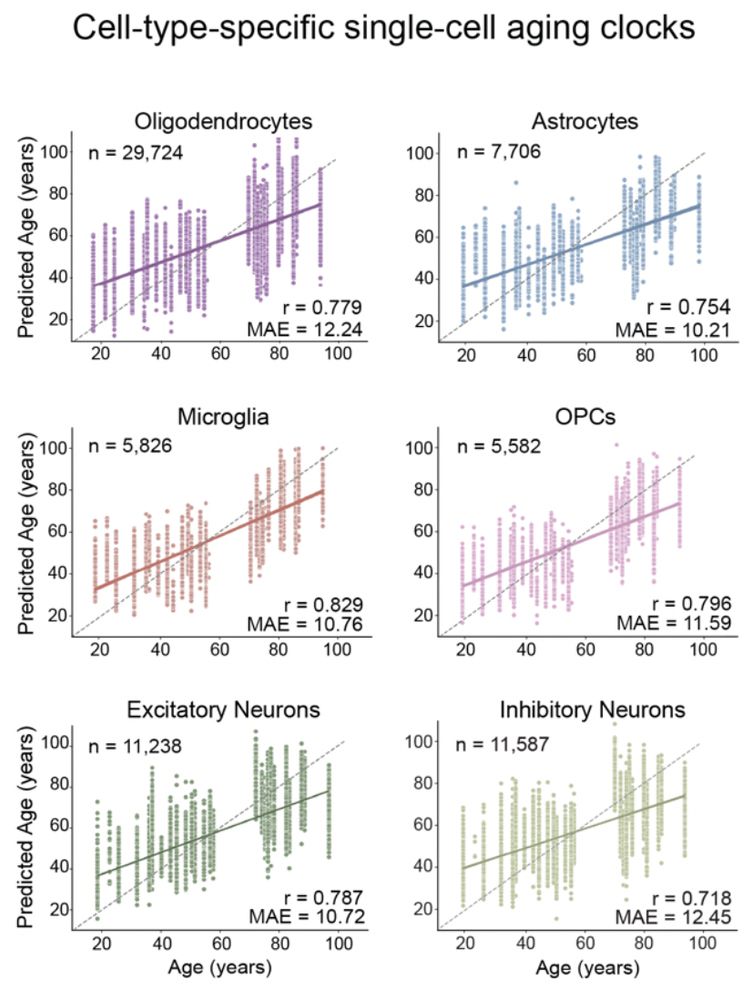
March 3, 2025 at 6:24 AM
Interesting study on cell-type-specific aging using single-nuclei transcriptomics in the human neocortex. Not clear to me based on this graph that pace of aging is striking different across cell types.
doi.org/10.1101/2025...
see also
https://doi.org:10.1038/s41593-024-01742-z
doi.org/10.1101/2025...
see also
https://doi.org:10.1038/s41593-024-01742-z
Novel environment exposure drives temporally defined and region-specific chromatin accessibility and gene expression changes in the hippocampus.
doi.org/10.1101/2024...
doi.org/10.1101/2024...
March 3, 2025 at 6:14 AM
Novel environment exposure drives temporally defined and region-specific chromatin accessibility and gene expression changes in the hippocampus.
doi.org/10.1101/2024...
doi.org/10.1101/2024...
A bit of a spooky title, but nice ressource for longitudinal imaging of brain connectivity throughout life.
Functional Hierarchy of the Human Neocortex from Cradle to Grave doi.org/10.1101/2024...
Functional Hierarchy of the Human Neocortex from Cradle to Grave doi.org/10.1101/2024...

March 3, 2025 at 6:09 AM
A bit of a spooky title, but nice ressource for longitudinal imaging of brain connectivity throughout life.
Functional Hierarchy of the Human Neocortex from Cradle to Grave doi.org/10.1101/2024...
Functional Hierarchy of the Human Neocortex from Cradle to Grave doi.org/10.1101/2024...
Long-term in vivo imaging of single neurons in the developing mouse brain from early postnatal days on. A game-changer in figuring out developmental trajectories. From the Cossart lab.
doi.org/10.1101/2025...
doi.org/10.1101/2025...

March 3, 2025 at 5:51 AM
Long-term in vivo imaging of single neurons in the developing mouse brain from early postnatal days on. A game-changer in figuring out developmental trajectories. From the Cossart lab.
doi.org/10.1101/2025...
doi.org/10.1101/2025...
In drosophila, by manipulating sets of surface proteins, you can re-engineer connectivity of olfactory neurons and generate a new neuron type that alters courtship behavior. Impressive work from the Luo lab.
doi.org/10.1101/2025...
doi.org/10.1101/2025...

Rewiring an olfactory circuit by altering the combinatorial code of cell-surface proteins
Proper brain function requires the precise assembly of neural circuits during development. Despite the identification of many cell-surface proteins (CSPs) that help guide axons to their targets, it re...
doi.org
March 3, 2025 at 5:36 AM
In drosophila, by manipulating sets of surface proteins, you can re-engineer connectivity of olfactory neurons and generate a new neuron type that alters courtship behavior. Impressive work from the Luo lab.
doi.org/10.1101/2025...
doi.org/10.1101/2025...
US stimulation (i.e. disruption) of specific thalamic nuclei in healthy humans affects arousal like behavior (central thal) and visual attention (pulvinar).
doi.org/10.1101/2025...
doi.org/10.1101/2025...

Transcranial ultrasonic stimulation of central thalamus reduces arousal in healthy volunteers
We present the first causal evidence in healthy humans linking central thalamus to vigilance and pulvinar to visuospatial attention using low-intensity transcranial focused ultrasound stimulation (tFU...
doi.org
March 3, 2025 at 5:33 AM
US stimulation (i.e. disruption) of specific thalamic nuclei in healthy humans affects arousal like behavior (central thal) and visual attention (pulvinar).
doi.org/10.1101/2025...
doi.org/10.1101/2025...
Reposted by Denis Jabaudon
Delighted to showcase our atlas for the inference of ligand-receptor mediated interactions between neuronal subtypes during mouse cortex development. Herculean endeavor by former PhD student Rémi Mathieu (now @alleninstitute.bsky.social) and team, in collaboration with
@LudovicTelley
Thread
🧵
@LudovicTelley
Thread
🧵
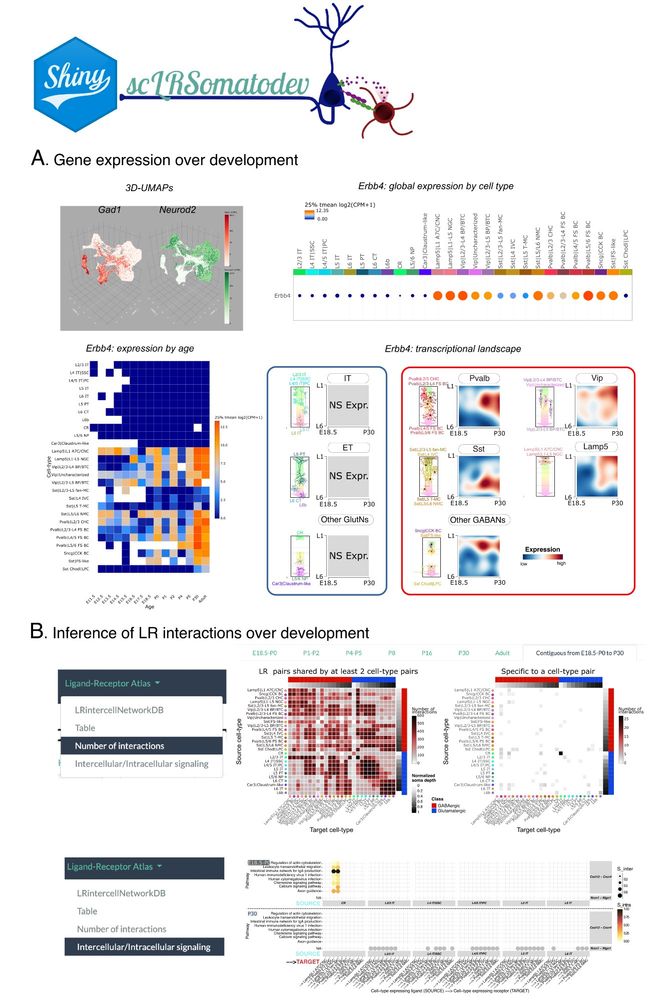
February 27, 2025 at 11:22 AM
Delighted to showcase our atlas for the inference of ligand-receptor mediated interactions between neuronal subtypes during mouse cortex development. Herculean endeavor by former PhD student Rémi Mathieu (now @alleninstitute.bsky.social) and team, in collaboration with
@LudovicTelley
Thread
🧵
@LudovicTelley
Thread
🧵
Reposted by Denis Jabaudon
Today, we're launching the Arc Virtual Cell Atlas, a growing resource for computation-ready single-cell measurements. arc-website-git-ben-virtual-cell-atlas-tool-arc-institute.vercel.app/news/news/ar...
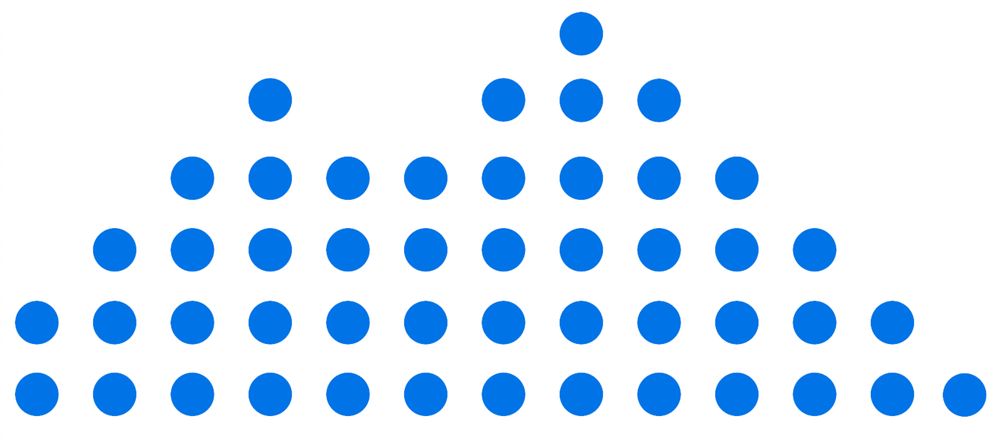
Arc Virtual Cell Atlas launches, combining data from over 300 million cells | Arc Institute
Arc Institute today launched the Arc Virtual Cell Atlas, a growing resource for computation-ready single-cell measurements, starting with data from over 300 million cells. The initial release of the A...
arc-website-git-ben-virtual-cell-atlas-tool-arc-institute.vercel.app
February 25, 2025 at 2:03 PM
Today, we're launching the Arc Virtual Cell Atlas, a growing resource for computation-ready single-cell measurements. arc-website-git-ben-virtual-cell-atlas-tool-arc-institute.vercel.app/news/news/ar...
There are no ASD or ALS genes. Just like there are no ASD or ALS patients.
There are genes associated with these diseases, and people with them.
It's beyond semantics; it's about pleiotropy (genes) & individuality (patients). Denying complexity doesn't make a problem simpler to solve (tell POTUS).
There are genes associated with these diseases, and people with them.
It's beyond semantics; it's about pleiotropy (genes) & individuality (patients). Denying complexity doesn't make a problem simpler to solve (tell POTUS).

February 26, 2025 at 4:33 AM
There are no ASD or ALS genes. Just like there are no ASD or ALS patients.
There are genes associated with these diseases, and people with them.
It's beyond semantics; it's about pleiotropy (genes) & individuality (patients). Denying complexity doesn't make a problem simpler to solve (tell POTUS).
There are genes associated with these diseases, and people with them.
It's beyond semantics; it's about pleiotropy (genes) & individuality (patients). Denying complexity doesn't make a problem simpler to solve (tell POTUS).

